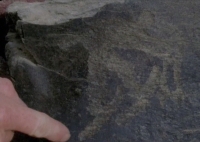In five minute increments I’m experiencing a cavalcade of newsbite dreams that would employ doctor Freud for a month. They say you need 26+ minutes sleep at a time to achieve effective rest, but what if there were a way to go beyond power napping into the speed-reading equivalent of dreaming?
Harlan Ellison wrote a story sometime after I was born called “The Function of Dream Sleep.” Spoiler alert: a premise of the story is that our dreams are not artful expressions of inner meaning, but rather our mind’s nightly trip to the crapper to excrete useless thoughts.
As I lay there tumbling into a surprisingly deep and disorienting dreamland for each four and a half minute session, it’s possible my mind was having a frantically productive spring cleaning session. No long involved mystical dreamland tales that beg interpretation and analysis, but rather mental exhalations that were as swift and satisfying as a series of sneezes.
I think of the fear-breathing exercise at Kristen Ulmer’s Ski to Live clinic. From my journal:
Last exercise for the night: breathe in your fears. All of them. Let each breath in carry with it one of our fears. We would have plenty, she assured us.
And with each breath out— it’s not succinct to explain— expel the belief that you will ever let go of that fear. In other words, accept that you may always have that fear … but the double-negative is actually closer to the effect Kristen was trying to cultivate: you’re not gathering up yet another “thing,” an acceptance of something unsavory, another worry for your analytical mind to obsess on, but rather you are expelling, exhaling a myth, a deceit, a lie. It’s important (and not readily accessible to me, anyway) that this not be confused: it’s not about debunking fears, it’s about breaking down the ways we hide and ignore our fears. Lots of negative language and dark concepts there— all mingling together. It’s tempting to work a mathematical magic and turn double-negatives into positives, but this is not a problem solved by unicorns and daisies. Trust me: I’ve tried several times in this paragraph alone.
I stood there breathing deep. On each successive inhale I never ran out of fears— or “worries” as I preferred to call them. These were very real worries that plague me daily. Here’s where the structure of the exercise struck me as revelatory: without the exhale, I would burst.
The cycle— the rhythmic give-and-take of our own respiratory system— limits each side’s contribution to the dialogue: One side says “What about money? What if I can’t pay the bills?” The exhale replies: “You may never know if you’re going to be able to pay the bills.” It’s only implied: “So now what?” because it’s time for another fear to be inhaled.
Perhaps like a village tribunal, little cases come before a judge, swift decisions are rendered, and the next case comes up without fanfare. Villagers trudge away wondering if it was worth it to gripe in the first place; judges go home at night doubting they made a difference in their community; and only a bigger mind sees that the process is the inhale and exhale of Justice.
You know Kristen and I are both Virgos? I’m a Year of the Rat guy, as well, making me exceptionally precise, organized, analytical, and someone who hoards things in wall cavities. I think her breathing exercise worked for me because it negated analysis and perfectionism: there is not enough time in the space of a breath to get it absolutely perfect. So you simply move on to the next breath. Or turn blue.
So what if snoozebutton dreaming could do the same for my subconscious, hopping from square to square to stomp out these nebulous half-formed thoughts? I’ll sleep on it and get back to you in 4.5 minutes.
Thanks for reading. Cheers,
![]()
Photo by Yours Truly
